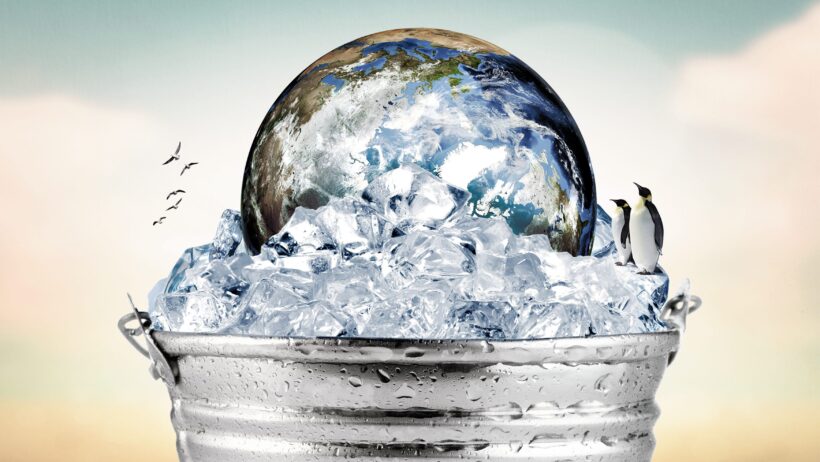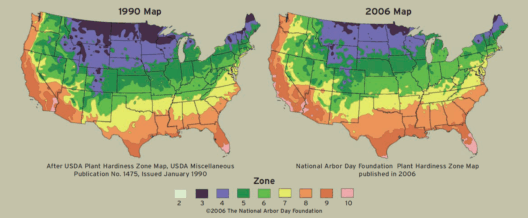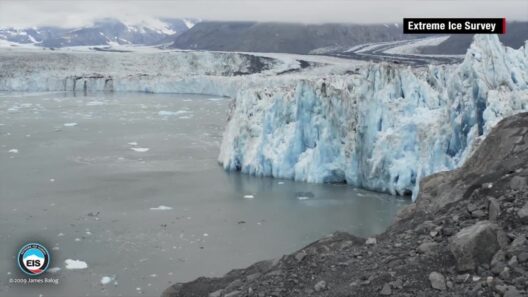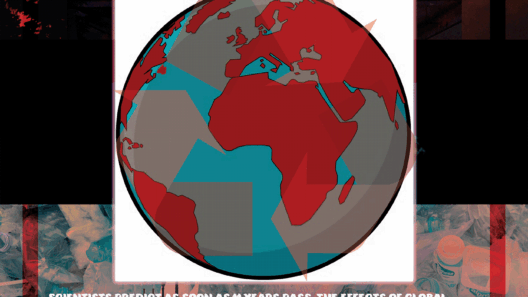Climate change is often perceived through a dichotomous lens: an encounter with either warming or cooling. However, the relationship between Earth’s climate systems is complex and multifaceted. One of the paradoxes worth exploring is whether warming the planet can lead to colder conditions, particularly in the context of potential future Ice Ages. This phenomenon, often dubbed the ‘Ice Age Paradox,’ underscores the intricate interplay of different environmental factors and the delicate balance maintaining Earth’s climate.
Understanding this paradox begins with grasping the fundamentals of climate. The planet’s atmosphere consists of various greenhouse gases, including carbon dioxide, methane, and nitrous oxide. These gases trap heat and regulate temperatures. Nonetheless, variations in ocean currents, solar radiation, and geological activity can disrupt this equilibrium. Human activities, such as the burning of fossil fuels and deforestation, have significantly exacerbated the concentration of greenhouse gases, leading to rapid climatic shifts.
To assess how warming can paradoxically result in colder temperatures, it is essential to evaluate the processes behind glaciation and the emergence of Ice Ages. Ice Ages are prolonged periods characterized by extensive glacial coverage across large portions of the Earth. They occur due to changes in the Earth’s orbit, axial tilt, and solar radiation intensity, collectively known as Milankovitch cycles. These cyclical changes can plunge regions into cooler periods, even amidst an overall warming planet.
One proposed mechanism involves the interaction between thermohaline circulation and surface temperatures. The oceans play a pivotal role in regulating global climate. The ocean currents—which transport warm and cold water around the globe—connect atmospheric and hydrological systems. For example, the Atlantic Meridional Overturning Circulation (AMOC) is critical in maintaining heat distribution. If significant ice melt occurs in the Arctic, as a consequence of warming temperatures, it can introduce freshwater into the North Atlantic. This influx disrupts the AMOC, potentially leading to a cooling effect in Europe and North America.
Another relevant phenomenon is the albedo effect, which refers to how surfaces reflect sunlight. Ice and snow possess high albedo, reflecting considerable solar radiation back into space. With current warming trends resulting in glacial melting, less ice exists to reflect sunlight, which leads to greater absorption of heat. Ironically, this melt also reduces global heat distribution efficiency — potentially triggering feedback loops that may result in colder regional climates in the long term.
There is also the consideration of volcanic activity as a climatic disruptor. Research indicates that significant volcanic eruptions can lead to global cooling through the injection of ash and sulfur dioxide into the stratosphere. This particulate matter reflects sunlight and diminishes solar radiation reaching the Earth’s surface, resulting in short-term temperature declines. The concern arises that a warming atmosphere may escalate the frequency of certain geological responses or instability, facilitating volcanic eruptions that could induce unprecedented cooling periods.
Several models focus on the potential for a modern-day Ice Age under continued warming. These models analyze historical data and climatic precedents, suggesting that a critical threshold could be reached in the ongoing climate crisis. For instance, during the last Ice Age, roughly 20,000 years ago, the world was significantly cooler than even today’s average. Yet, just as modern activities are enhancing global temperatures, they may also create conditions, through mechanisms outlined earlier, to facilitate regional cooling.
Moreover, permafrost thawing is an area of paramount concern. It releases long-stored carbon dioxide and methane into the atmosphere, further contributing to greenhouse gas concentrations. However, the sudden pulse of heat-trapping gases may lead to short-term warming but also introduce changes in biogeochemical cycles. Altered ecological patterns might shift atmospheric circulation, which could eventually lead to regional cold episodes, starkly contrasting the broader warming trend.
The implications of such shifts are profound. A world capable of sudden and unforgiving cooling poses significant challenges for agriculture, biodiversity, and human living conditions. Crop failures, habitat losses, and food security threats could escalate exponentially. This paradox underscores the necessity of establishing rigorous climate monitoring and adaptive strategies. Systematic international collaborations focus on comprehensive climate models that consider both warming and cooling phenomena are imperative.
In summation, pivotal questions arise concerning humanity’s trajectory. Can a warmer planet indeed engender colder ones, and how does this influence our understanding of climate dynamics? The interplay of oceanic currents, volcanic activity, albedo effects, and biogeochemical responses reveals an intertwined, complex narrative. Addressing climate change requires a holistic approach—recognizing and responding to the possibilities inherent in both warming and cooling phenomena. In this intricate climate web, awareness and decisive action take precedence. The ramifications of inaction will propel future generations into an uncertain climate, wherein lessons from the past must inform actions moving forward.
Through informed decision-making, proactive measures can ensure that humanity shapes a sustainable and resilient environment. Understanding the Ice Age Paradox stands as a testimony to the critical and nuanced dialogue regarding climate change, urging advocates and policymakers alike to acknowledge its dual complexities.







